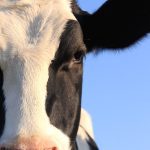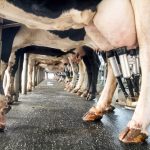Bird flu virus particles were found in tissue samples taken from one dairy cow sent to slaughter at a U.S. meat processing plant, but none were detected in samples from 95 other cattle, the U.S. Department of Agriculture (USDA) said on Friday.






Bird flu infections in U.S. dairies underscore reasons pasteurization rules are a good idea

Strain infecting dairy cattle in U.S. behaves erratically, says bird flu specialist

North Carolina joins total states reporting outbreaks of avian influenza dairy herds


Virus may have been spread through milking equipment, dairy workers

Avian influenza strain may not affect beef cattle the same as dairy